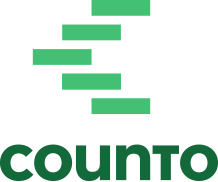Singapore’s Foreign Worker Quota: What SMEs Need to Know in 2025
Hiring foreign workers is common in many small and medium-sized businesses in Singapore — especially in sectors like construction, retail, F&B, and cleaning services. But every employer needs to navigate the foreign worker quota system, also known as the Dependency Ratio Ceiling (DRC).
If you’re an SME owner planning to hire foreign manpower in 2025, here’s what you need to understand about how Singapore’s foreign worker quota works — and how it affects your hiring, costs, and compliance responsibilities.
What Is the Foreign Worker Quota in Singapore?
The foreign worker quota sets a limit on the proportion of foreign workers you can employ, relative to your total workforce.
This policy is part of Singapore’s effort to maintain a strong local workforce while still allowing businesses access to supplementary foreign labour where needed.
The quota applies mainly to Work Permit and S Pass holders — not to Employment Pass (EP) holders, who are subject to separate criteria (like salary and qualifications).
What Is the Dependency Ratio Ceiling (DRC)?
The DRC defines the maximum percentage of foreign workers you can hire in specific sectors. It varies depending on your industry:
| Sector |
DRC (Work Permit + S Pass) |
| Construction |
87.5% |
| Manufacturing |
77.8% |
| Marine Shipyard |
77.8% |
| Process |
87.5% |
| Services |
35% |
For example, if you’re in the services sector and you employ 10 staff, only 3 can be foreign workers under Work Permits or S Passes.
✅ Paperwork eating your time? Let AI do the heavy lifting. Our platform automates daily tasks while expert accountants ensure everything’s perfect. Break free here.
What About S Pass Quotas?
S Pass holders are subject to a sub-quota within the overall DRC. As of 2023–2025, these are the S Pass quota limits:
| Sector |
S Pass Sub-quota |
| All sectors |
Up to 10% of total workforce |
So, even if you’re within the overall DRC limit, you must still ensure that S Pass holders don’t exceed 10% of your total workforce.
Don’t Forget the Foreign Worker Levy (FWL)
In addition to the quota, Singapore businesses must pay a monthly levy for each Work Permit or S Pass holder. This cost varies by:
- Sector
- Worker’s qualifications (skilled or basic-skilled)
- Number of foreign workers relative to total headcount
The more foreign workers you hire above certain thresholds, the higher the levy rate you’ll pay per worker.
The FWL is designed to incentivise businesses to improve productivity and hire locally where possible.
How Are Quotas Calculated?
Quotas are calculated based on the company’s local workforce size, determined through CPF contributions. This means:
- You must be making CPF contributions for your local employees
- Your quota fluctuates based on your monthly headcount of local staff
- The more locals you employ, the more foreign workers you’re allowed (within sector limits)
Tips for SMEs Managing Quotas in 2025
- Plan Headcount Strategically
Align hiring plans with your quota limits and levies. Overhiring foreigners without enough local staff leads to non-compliance or higher levy costs. - Automate Payroll and CPF Calculations
Accurate tracking of local vs foreign manpower and CPF contributions helps ensure your quota calculations are correct and up to date. - Keep Documentation Ready
Be prepared for audits. Maintain proper records of employee details, passes, and CPF payments to prove compliance with MOM’s rules. - Explore Local Hiring Support
Look into programmes like Career Conversion Programmes (CCPs) or Wage Subsidies that can help you build a stronger local team — and increase your quota room.
Summary
Singapore’s foreign worker quota system is built to support sustainable hiring — balancing the needs of business with national workforce goals. For SMEs, this means being smart about manpower planning, staying compliant with evolving rules, and keeping a close eye on headcount ratios and levies.
By understanding how the DRC and levy framework works, SMEs can avoid penalties, control costs, and grow their team responsibly in 2025 and beyond.
Modern Accounting That Finally Gets Your Business
Running a small business means wearing too many hats. Your accounting shouldn’t add to that burden. Yet traditional bookkeeping services keep asking the same questions month after month.
Counto delivers outsourced accounting that gets smarter over time. Our AI platform learns your unique business patterns and automatically handles daily transactions, while expert accountants ensure everything’s accurate. With direct WhatsApp access to your Customer Success Manager, you get enterprise-level financial management without the enterprise price tag.
Experience accounting that works as hard as you do. Our small business clients cut bookkeeping time by hours and never miss a tax deadline. Ready for accounting that understands your business? To get started, speak to us directly on our chatbot, email [email protected], or use our contact form.
Here are some articles you might find helpful:
How to File Annual Returns with BizFile in Singapore in 2025
Leave And Claims Management: The Overlooked Role Of Payroll Services
Cash Vs. Accrual Accounting: Which Method Suits Your Small Business?







